Lots of people know you can eat nasturtium flowers, but nasturtium capers, also called poor mans capers are my favorite part of the plant. I've fermented unopened flowers from a lot of plants, and these are the best substitute for capers I know of. I'll explain how to make them in the post, and what to do with them.
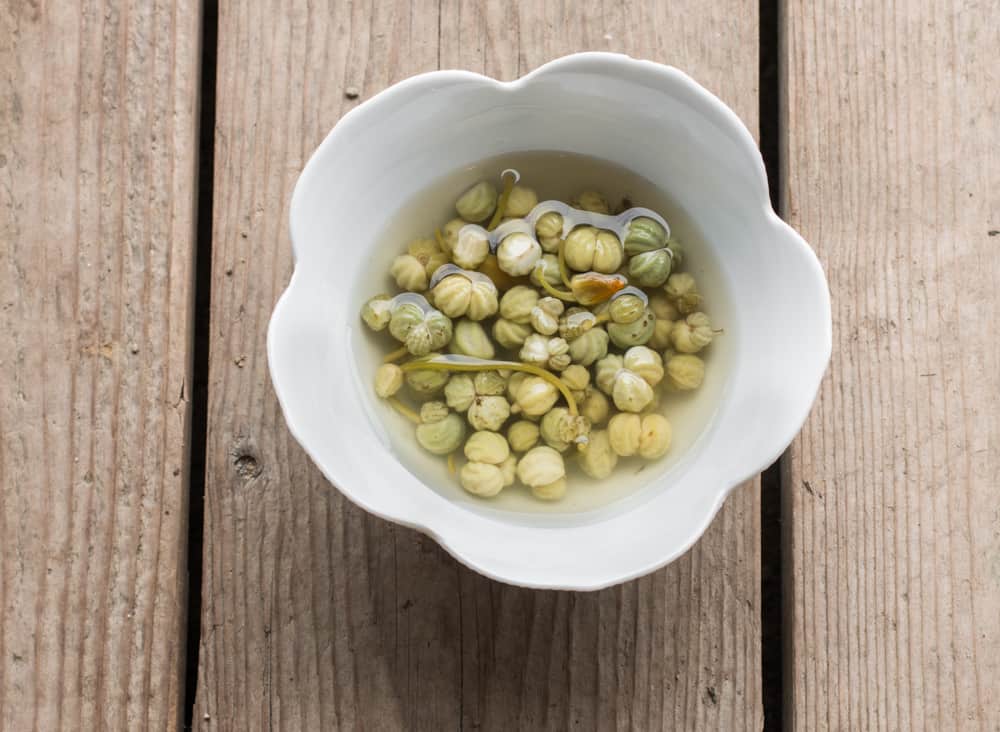
The only tricky thing in making these is that it’s not easy to get a ton of them. Unless you know someone with a really large nasturtium patch, you’re going to have to work for them. Making them is worth the effort though.
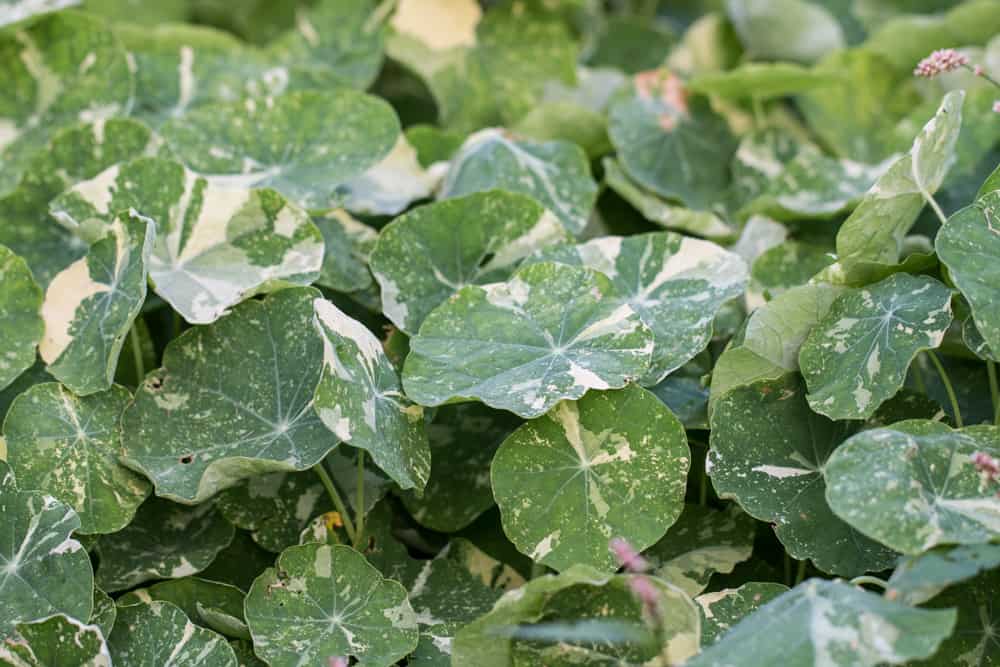
You don’t need a bunch of fancy ingredients to make capers
Before you embark on a journey to stuff jars of capers full of herbs and seasonings for a fermented nasturtium capers recipe, think back to the first time you bought capers. Regular capers are just unopened flowers of a Mediterranean vine (Capparis spinosa).
There's nothing in most capers besides salt brine and the pickled nasturtium seeds. There's no rosemary, no peels of lemon rind, bay leaf, thyme, chilis, huge cloves of garlic, or peppercorns of any color.
I love seeing pictures of things in cute canning jars with ribbons on them, but you don’t have to add all kinds of stuff to make great tasting capers. All you really need is a little time, salt, water, and nasturtium seed pods. Personally, I like clean tasting pickles more than ones that are muddy with too many flavors.
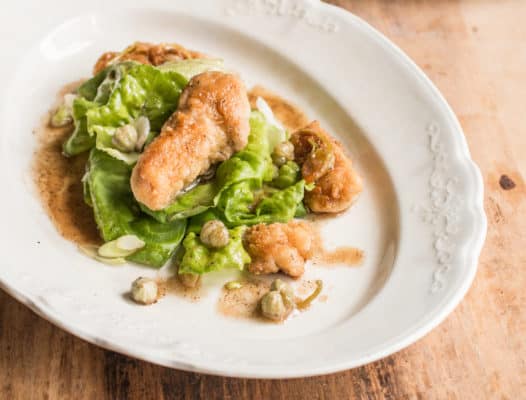
Fermenting the seed pods is the key to flavor
Most of the recipes out there have vinegar in them. If you look on the side of your jar of capers from the store you'll probably notice vinegar, but it’s unnecessary, and vinegar also makes somethings too soft. Recipes that call for pouring boiling vinegar over capers and processing in a water bath will make unimpressive, soft capers.
Just a little salt and water in the right proportions, will easily ferment right on your counter top at room temperature. After a few days, and then some time in the fridge, the pH will low enough that it will be shelf stable without any vinegar at all.
I found I like keep them in the fridge, where they will last until the next ice age as long as they’re kept underneath the brine. With enough patience, things kept in brine under refrigeration will ferment just like they would outside of the fridge, just at a slower pace.
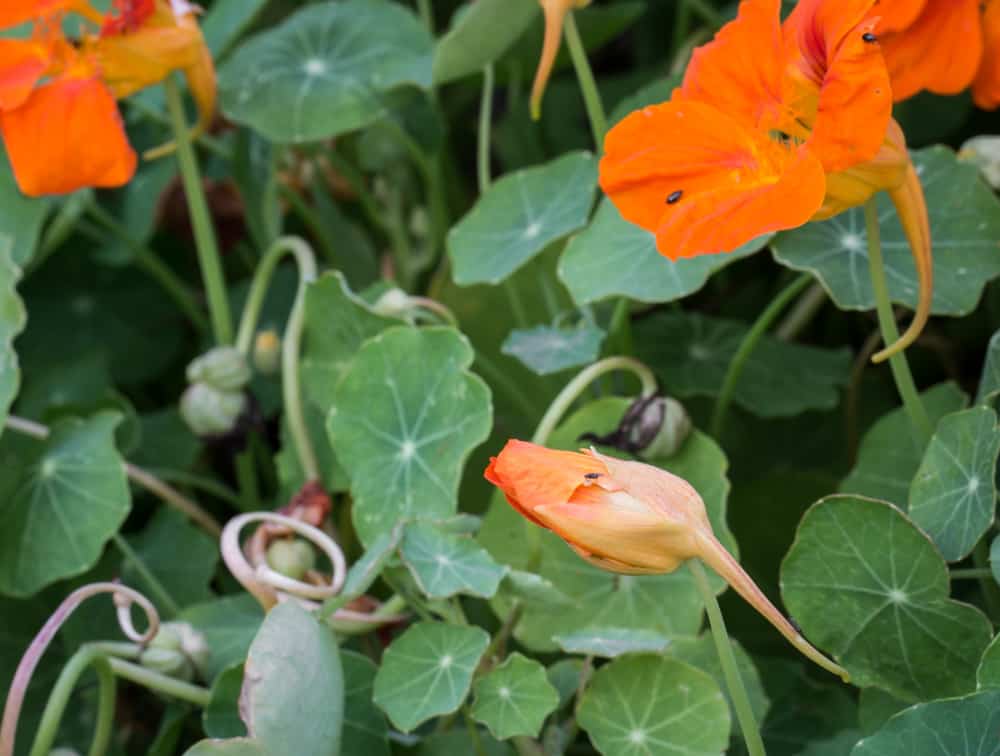
The only slightly tricky part with fermenting in brine (lacto-fermentation) is deciding how much salt to put in your brine. I like, and have had good success using 3-5% brine for my casual ferments at home.
If you don't know, using a scale to measure your salt for fermenting in brine is a great key for success. Scales are cheap now days, so if you don't have one, go order one, weighing ingredients for baking and fermenting will make you a better cook. Even so, I'm including both volume and weight measurements for simple, small batch brine fermented capers here.
Harvest nasturtium seed pods as you find them and add to the brine
At the end of the day what really matters is the flavor. Nasturtium capers taste the same as store bought capers after fermenting, but with a little more crunch. If you want softer capers, check out my post on milkweed capers. The only real difference you'll notice is that nasturtium capers have a strong aroma, but it doesn't affect the flavor.
The only tricky part is that it can be tricky to find lots of seed pods. The good part is you can pick them as they come, and drop them in brine with the rest of the buds as they ferment. Eventually flavors will align and they’ll all taste the same.
Oh, you can use both unopened flower buds and green seed pods, but the seed pods are superior in flavor and texture by far. The flower bud you see below was just an accident.
Nasturtium Capers (Lacto-Fermented)
Equipment
- 1 pint or quart mason jar
Ingredients
- 25 grams kosher salt 1.5 tablespoon
- 500 grams water 2 cups
- 100 grams Nasturtium seed pods or just as many as you have to put in the jar
Instructions
- Combine the water and salt and whisk to dissolve. Pour the salt water in to a pint jar or other container and add the nasturtium seed pods, then screw on the lid.
- Leave the jar on the counter for 3 days to start fermenting, or leave out a bit longer if you want them to sour more quickly, then transfer to the fridge.
- Open the jar here and there to check on the capers and release carbon dioxide and to make sure water doesn't evacuate. I often put mason jars of ferments in another larger container to catch possible drips.
- After about 2 weeks the capers should have a nice flavor, but if you leave them in the fridge longer they will continue to age and develop until the pH is as low as it can go. More or less, the longer they sit, the better they will get, and you can let your palette be your guide.

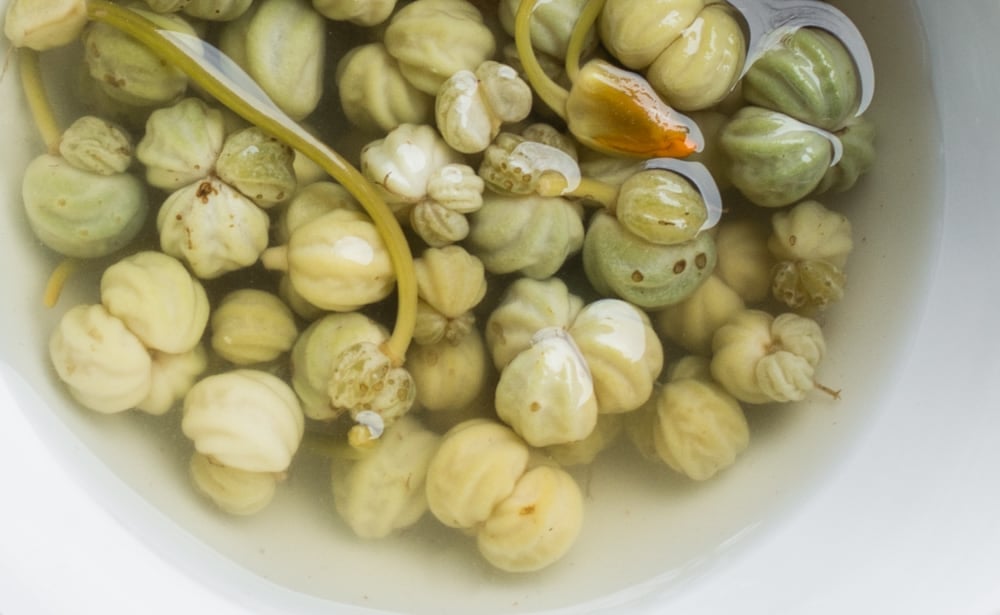
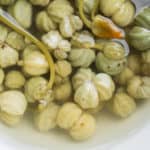
Karen S Evans Cunningham
I have made my first set of capers using your recipe and they are delicious. So thanks a million
Alan Bergo
Great.
Kristy
Mine have been floating at the top for 5 days, and yes, I've shake it every day. Will these be safe to eat? I used mostly buds since that's what I had.
Alan Bergo
The flower buds are not what you really want to use here. a few is fine if I have them in the mix but the unripe seed pods are what you want.
Sara D
Any reason I couldn’t/shouldn’t add these to the same jar when I am making lacto fermented pickles
Alan Bergo
Yes, they will make it smell.....different. Try them on their own first.
Beth
Hi there! Do you recommend using any seasoning in addition to salt — bay leaf, pepper corn, dill, etc?
Alan Bergo
Not for the first batch. After you make it once and understand the flavor, how it tastes naturally, etc go ahead and play with additions.
Leanne
Hwllo. Just did mine about 2 hours ago. The seedpods are still floating to the top, do I need to add a weight of some sort to enaure the top ones go under the brine?
Alan Bergo
Patience. Stir it occasionally or shake the jar.
Zelmaré
I've just ripped out a patch of nasturtiums and found a handful of seed pods - I'm going right out to look for some more to put in brine! Lovely article, thank you so much!
Julie Crossen
I'm so glad I found this recipe. I was about to use a vinegar brine and I would have wasted a bunch of naturtium pods. Horrors!
Bonita
Hi there Alan, you mention Kosher salt... can I use pink himalayan salt instead ?
Alan Bergo
Absolutely.
Marie Murphy
Fabulous,fantastic and I do not intend to waste a single nasturtium seed thankyou so much!
Kelley Smith
Hello. I am going out to pick my nasturtium seed pods NOW! I can't wait to make these delicious capers. Thank you for sharing such great information and recipe for this.
Kelley
Alan Bergo
Good deal, also, as one other commentators mentioned the smell is, unique, but the taste is very good. 🙂
NWP Sarah
I love your site and it’s encouraged me to forage a bit more around my area! I tried the fermented nasturtium seeds and weighted out the salt for brine. They have been fermenting for about a week and my question is about the smell. I’ve fermented other items but this is the first time it smells like sulfur, rotten eggs, is this normal? Is that to long, to short, wrong bribe, let it air out? They have gone a bit white since I started and it’s been sealed in airtight container. Did I go wrong or is this how it should be?
Thanks in advance:)
Alan Bergo
The loss of color is normal. Yes, brassicas can develop some strong aromas, pickled breakfast radishes can be horrific. The flavor of nasturtium capers is one of the best though. Sauerkraut smells foul to people too.
Dwight Zietlow
Hey Alan are you using the flower buds of the nasturtium or the seed pod?
You had mentioned both in this article.
Alan Bergo
Dwight! Seed pods-it's listed in the recipe. Also.....SPIDER WORT CORDIAL. 🙂
Polly
“ Oh, you can use both unopened flower buds and green seed pods, but the seed pods are superior in flavor and texture by far. The flower bud you see below was just an accident.”
Alan Bergo
I don't understand what that means.
Dee
I so enjoy your posts. I think I need you to come to my woods to help me in hunting for mushrooms. I know they are there. Just not sure what to do with them!
Alan Bergo
Thanks Dee, are you located in the Midwest? I visit locations to assess their wild food potential and walk around with the owners. You never know what you might have right in the back 40.